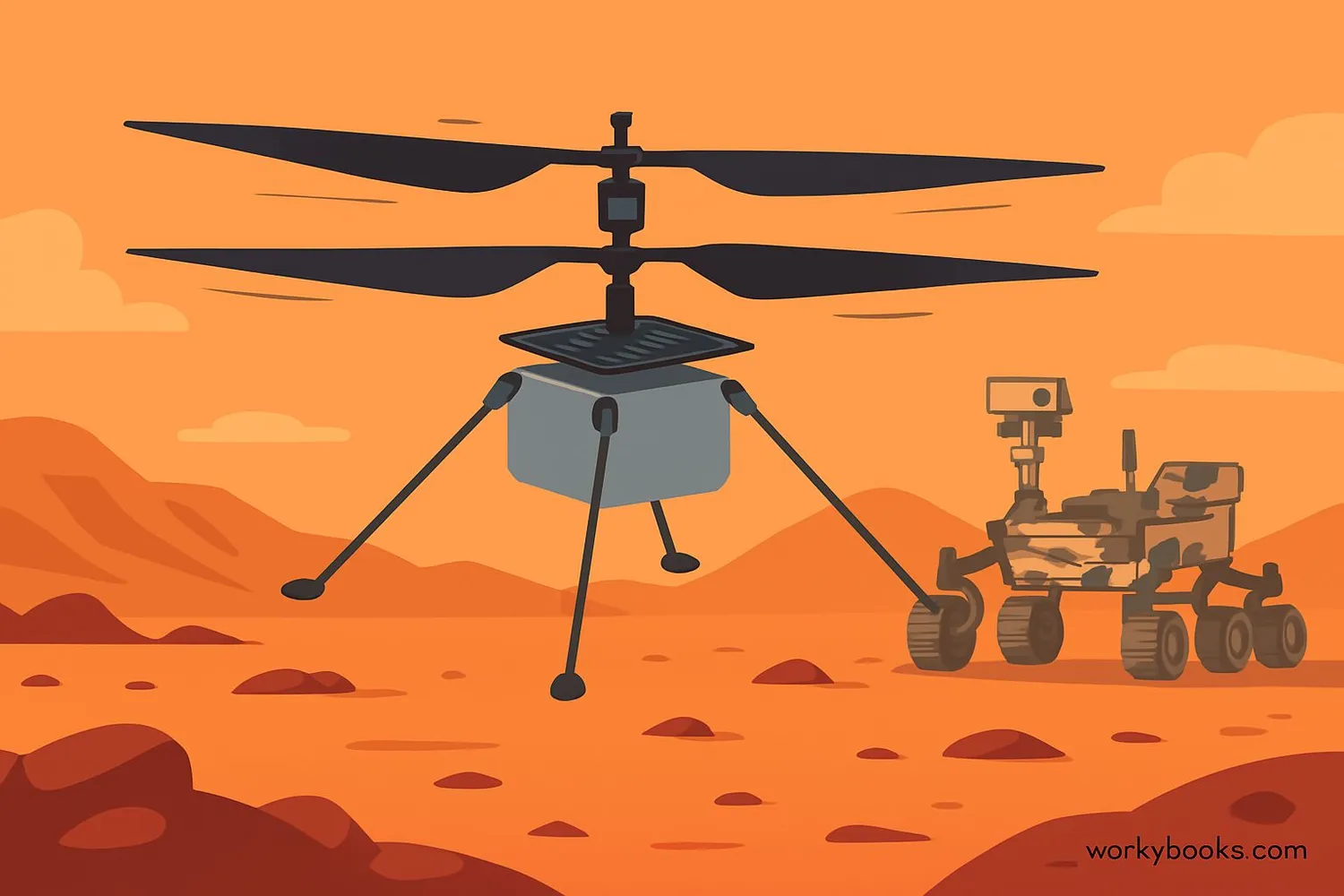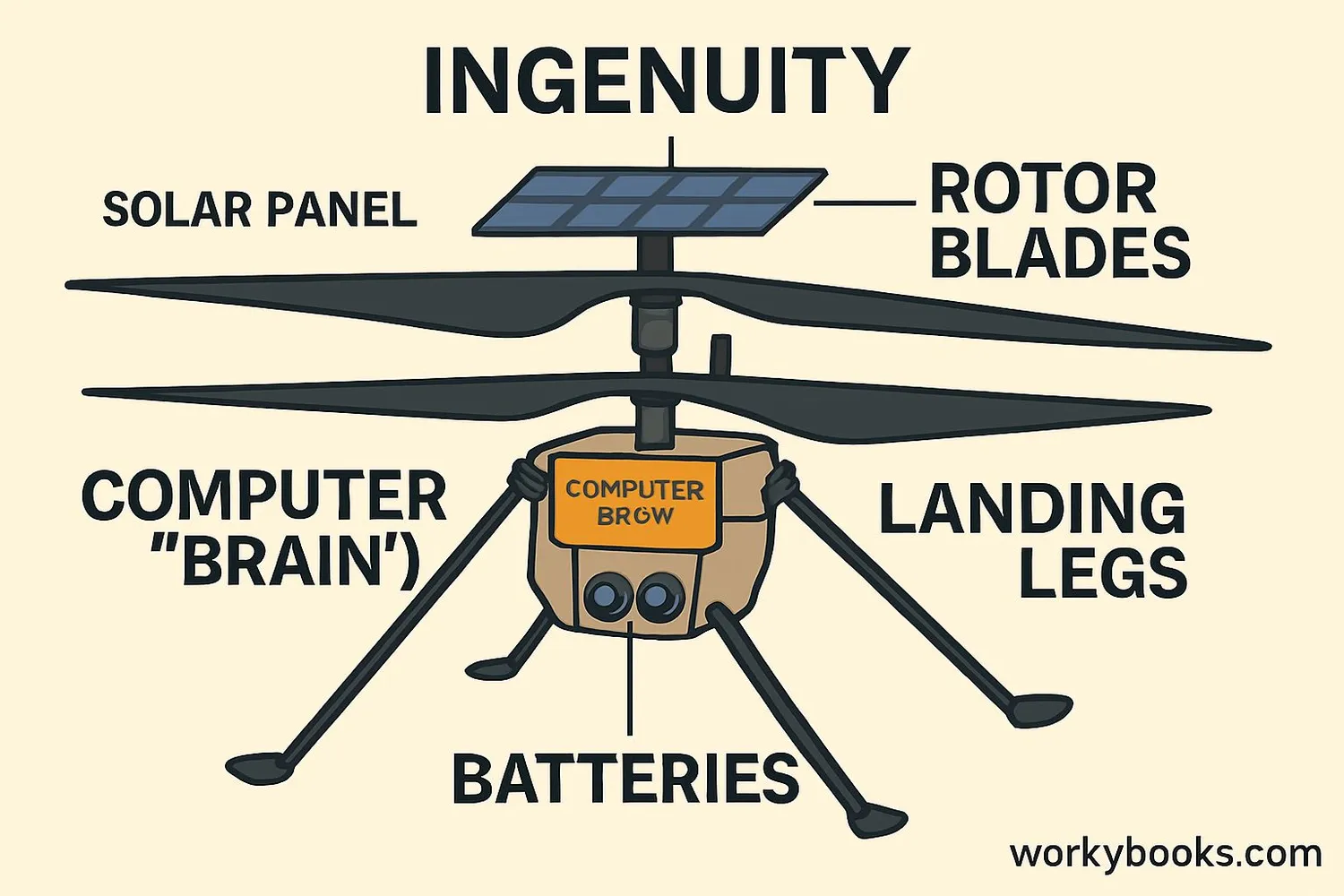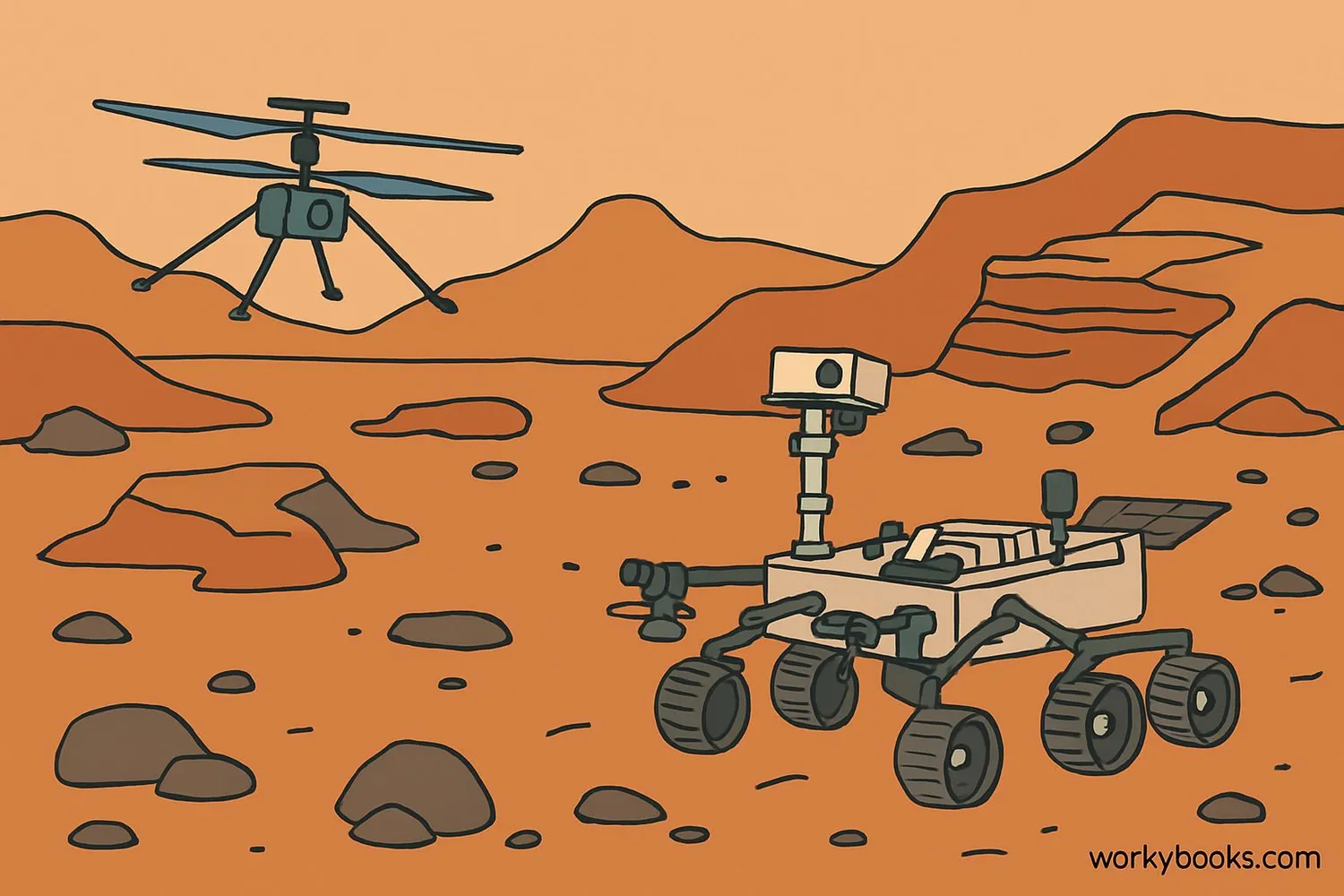The Mars Helicopter - Definition, Examples, Quiz, FAQ, Trivia
Discover the first aircraft to achieve powered flight on another planet!
What is the Mars Helicopter?

The Mars Helicopter, named Ingenuity, is a small robotic helicopter that made history as the first aircraft to achieve powered, controlled flight on another planet! It traveled to Mars with NASA's Perseverance rover and landed in Jezero Crater on February 18, 2021.
Ingenuity is about the size of a large drone (19 inches tall) and weighs only 4 pounds on Earth (1.5 pounds on Mars). It has four special carbon-fiber blades that spin about 2,400 times per minute to lift it in Mars' thin atmosphere. That's about 10 times faster than helicopter blades on Earth!
Mission Facts!
Ingenuity was designed to make just 5 flights over 30 days, but it completed 72 flights over nearly three years!
How the Mars Helicopter Works

Flying on Mars is incredibly challenging because the atmosphere is only 1% as thick as Earth's. This makes it much harder to generate lift. To overcome this challenge, Ingenuity has special features:
Ultra-Light Design
Made with lightweight materials to minimize weight
Fast-Spinning Blades
Blades spin 5 times faster than Earth helicopters
Solar Power
Solar panel charges batteries between flights
Autonomous Flight
Flies itself using pre-programmed instructions
Cold Protection
Heater keeps electronics from freezing at night
Ingenuity can't be flown in real-time from Earth because radio signals take 5-20 minutes to travel between planets. Instead, NASA engineers send flight plans to the helicopter, and it flies autonomously using its onboard computer, cameras, and sensors.
Flight Records!
Ingenuity's longest flight was 1,481 feet (452 meters) at a height of 40 feet (12 meters) for 169.5 seconds!
Why the Mars Helicopter is Important

Ingenuity proved that powered flight is possible on another planet, opening up new possibilities for space exploration:
Aerial Scouting
Helicopters can scout terrain ahead of rovers
Access Difficult Areas
Can reach places rovers can't, like cliffs and caves
High-Resolution Imaging
Provides unique aerial perspectives of Mars
The success of Ingenuity has paved the way for future aerial explorers on Mars and other worlds. Future Mars helicopters might:
• Carry scientific instruments to study the planet
• Explore lava tubes that could shelter future astronauts
• Serve as communication relays between surface missions
• Help locate resources like water ice
Ingenuity showed that we can expand our exploration capabilities beyond ground-based rovers, giving us "eyes in the sky" on other worlds!
Mars Helicopter Quiz
Test your knowledge about the Ingenuity Mars helicopter with this fun quiz!
Frequently Asked Questions
Here are answers to common questions about the Mars Helicopter:
Fun Mars Helicopter Trivia
Discover amazing facts about the Ingenuity Mars Helicopter:
Small But Mighty
Ingenuity is tiny - its main body is about the size of a tissue box! Its carbon-fiber rotor blades stretch to 4 feet (1.2 meters) tip-to-tip.
First Flight
On April 19, 2021, Ingenuity made the first powered flight on another planet. It rose 10 feet (3 meters), hovered for 39.1 seconds, then landed safely.
Special Materials
Some parts of Ingenuity were made with materials from Earth drones, including over 1,500 commercial off-the-shelf components!
Total Distance
Over its mission, Ingenuity flew a total of 10.5 miles (17.0 km) - that's farther than the Wright brothers' first 12 flights combined!


